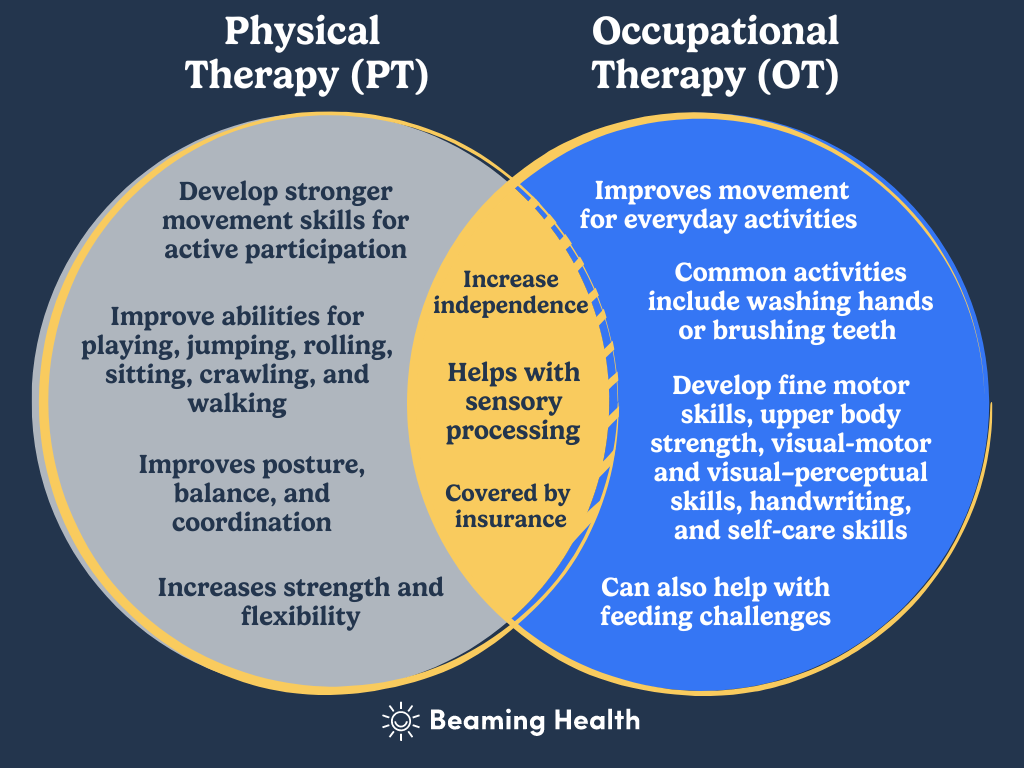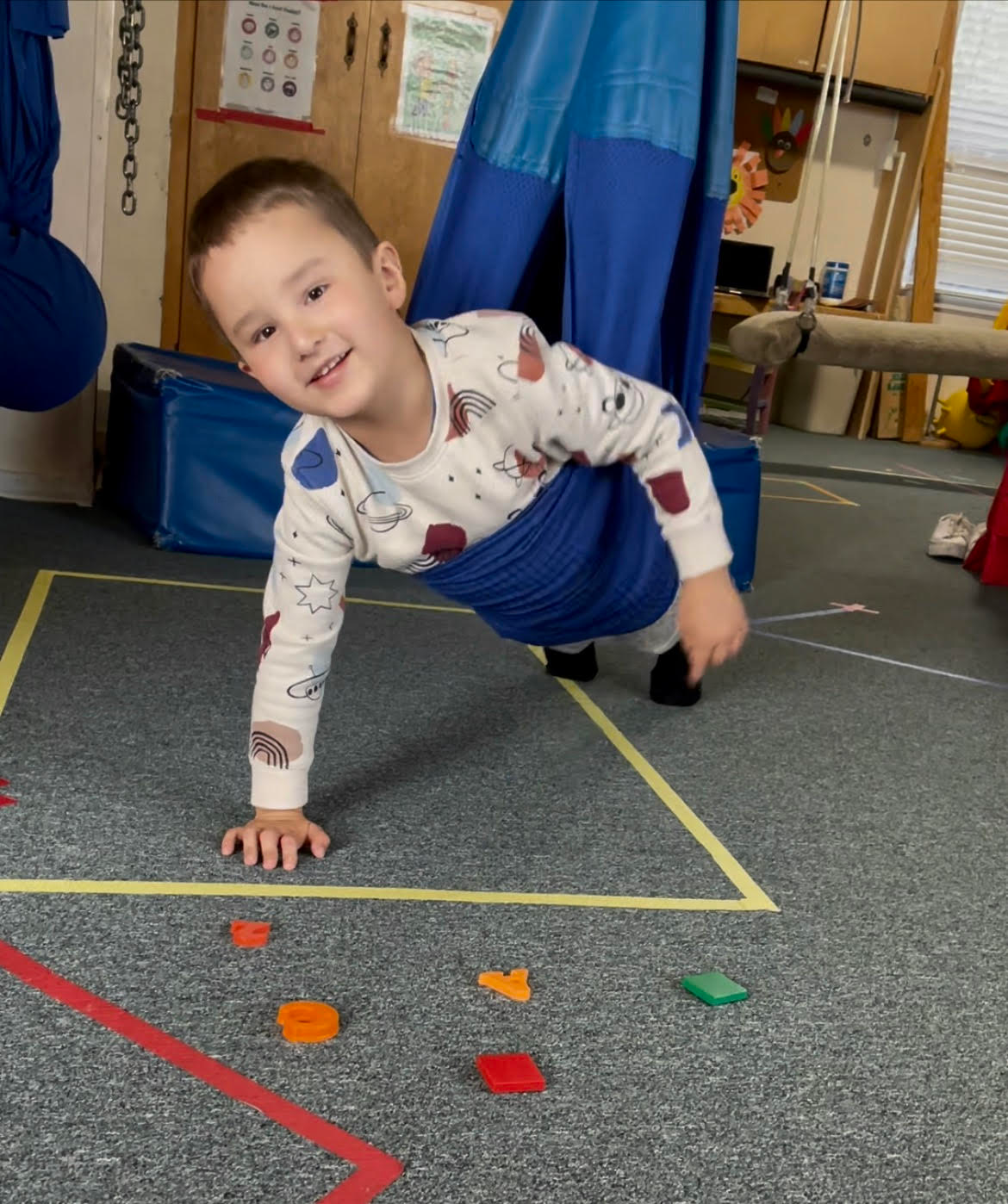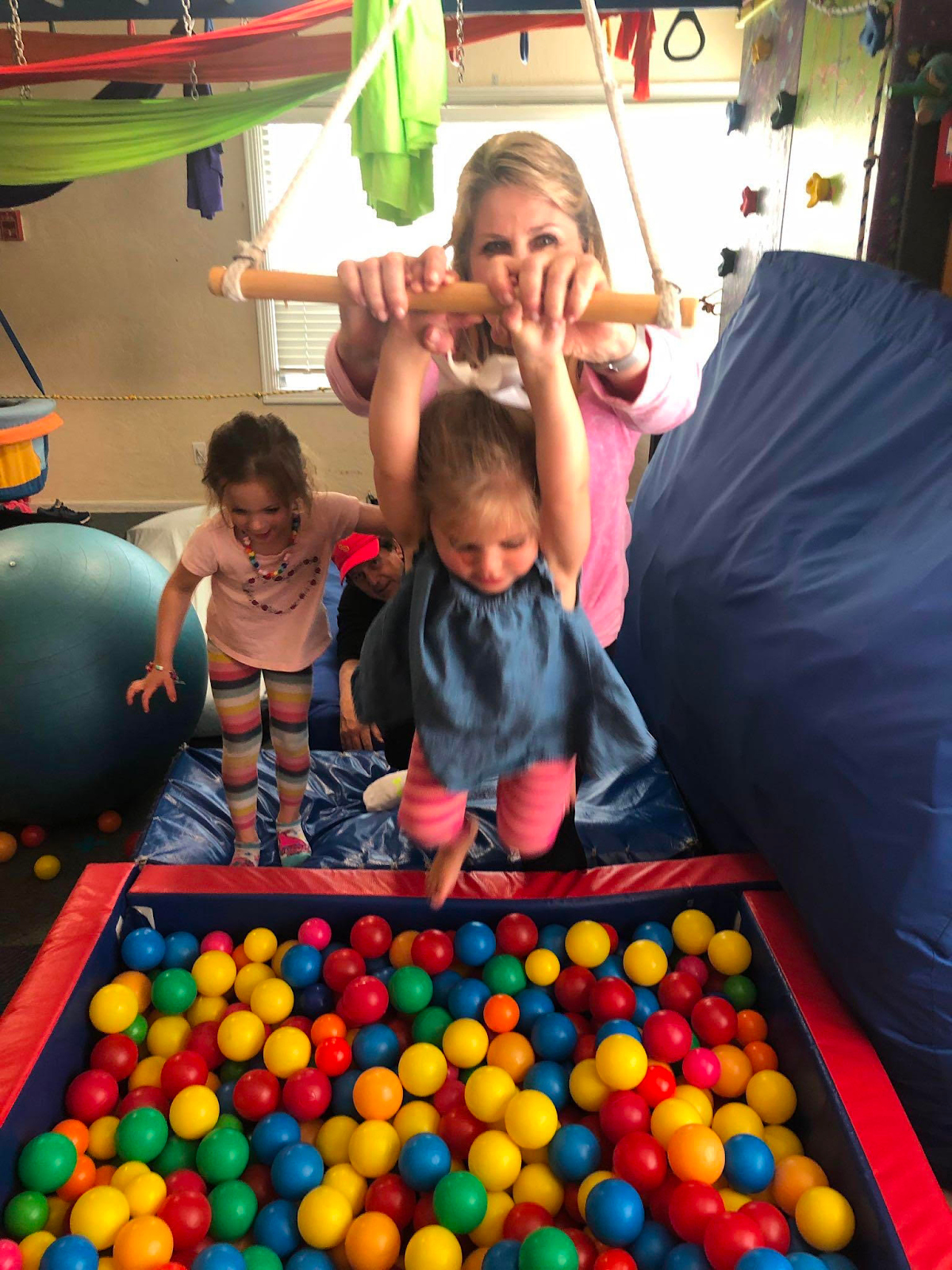Physical therapy for autistic children: What to know
Updated: August 4, 2023 · 6 Minute Read

Reviewed by:
Rebecca Berry, MSPT, Director of Developmental Pathways for Kids
Highlights
- Pediatric physical therapy helps children improve play and functional skills, motor skills, and general physical development.
- Many autism families use both occupational therapy and physical therapy to help their children lead more independent lives.
- Physical therapy focuses on improving physical movement and balance. Occupational therapy improves movement for everyday activities such as brushing teeth or toileting.
Physical therapy for autistic children can be quite common because an estimated 50 to 85% of autistic children experience motor and mobility challenges.1 These challenges can include difficulty moving independently or limited ability to participate in peer play.
Is physical therapy used with other therapies?
Yes, many autistic children receive additional types of care in combination with physical therapy to address other needs. For example, children may receive speech therapy to support speech and communication development. Occupational therapy is also often used in conjunction with physical therapy.
What is the difference between physical therapy and occupational therapy?
Physical therapy (PT) and occupational therapy (OT) can both help neurodivergent children lead more independent lives. Many people get the two therapies confused because they are so similar. PT focuses on improving physical movement and balance. OT focuses on improving daily functional abilities such as brushing teeth or toileting. Both can help with sensory processing challenges. Both PT and OT are typically covered by insurance.

What does physical therapy for autism look like?
Physical therapy focuses on improving movement, reducing pain, and increasing mobility. Physical therapists care for challenges with movement, posture, balance, and coordination. Differences or damage in the nervous system can affect a child’s physical skills which include rolling, sitting, crawling, and walking.
A licensed physical therapist uses exercises, movement techniques, and equipment to help people of all ages and needs. Many pediatric physical therapists specialize in helping children with autism and other developmental differences. Physical therapy is all about helping with sensory processing and getting a child to move and explore in their environment. There is also general physical therapy (also known as musculoskeletal or orthopedic physical therapy) that helps people recover from injuries through exercises and massage.

A physical therapist will use a vestibular system (like a swing) to help kids develop motor skills, balance, and dynamic movement. Image is from Developmental Pathways for Kids
Is physical therapy beneficial for all children with developmental disabilities?
Physical therapy can help anyone who needs support in motor control, strength, and agility. This includes developmental disabilities like autism and cerebral palsy. Physical therapy uses exercise and movement techniques that are supported by research and considered an evidence-based practice.2
Physical therapists who specialize in helping children with disabilities will create a personalized care plan. For example, if your child has difficulty with postural control, strength, and motor coordination, the therapist will teach them activities to work on to develop these skills.
PT may help your child with any of the following:
- Play skills: Climbing, building, throwing, catching, and peer participation as part of a group
- Functional skills: Maneuvering through the environment, accessing playground equipment, and performing everyday actions
- General (gross) motor coordination: Balancing, walking, and moving up and down stairs
- Fine motor skills: Hand-eye coordination for ball skills and other activities
- Whole-body coordination: Jumping, running, and other whole-body movements
- Social skills: Interact and communicate with others during group play or on a team sport
- Strength and Endurance: Also includes flexibility

Physical therapists will provide multisensory experiences and activities to develop their motor skills, strength, and whole-body coordination. Image is from Developmental Pathways for Kids
How do I know if my child needs physical therapy?
Your child may benefit from physical therapy if they experience any of the following:
- Delayed balance and coordination skills, such as tripping or falling easily
- Delayed gross motor skills, such as a delay in walking, jumping, or climbing stairs
- Low levels of physical strength, such as decreased ability to interact with playground equipment, and delays in developing motor skills
- Low levels of flexibility, such as tying a shoe or scratching the lower back
- Avoiding any physical activity because they are sensitive to movement activities or fearful of heights
- Difficulties with daily physical activities, such as bathing, dressing, and moving independently in the environment
If you are concerned with your child’s motor or mobility skills, speak with your pediatrician about getting a physical therapy evaluation. If you’re working with a therapist, they might have recommendations to look into as well. Beaming Health is also building a directory of physical therapists and other autism experts covered by your insurance in your area.
How long does physical therapy last?
You can expect most physical therapy sessions to last 30–60 minutes. Some children will only need a few sessions to achieve their goals. For other children, physical therapy may last for several months. It all depends on the individualized needs of the child.
Is physical therapy affordable?
Yes, physical therapy can be affordable. Here are a few options to consider:
- If your child is under the age of three, they may qualify for free physical therapy (and other services) in their home or daycare through early intervention under the Individuals with Disabilities Education Act (IDEA).3
- If physical therapy is necessary for your child’s success in school, they may also qualify for educational PT under IDEA, provided in their school.4
- Most insurance plans cover physical therapy. Families often seek private physical therapy to supplement school-based physical therapy. Depending on your insurance plan, you may have to pay a copay. Check with your insurance provider for clarification.
Physical therapy costs between $100 and $250 per session without health insurance.
What’s the physical therapy process?
Once you find a quality physical therapist you want to work with, here are a few things you need to know:
- There will be an evaluation. First, you can expect an assessment to identify your child’s areas of strength and needs. A physical therapy evaluation usually lasts 30 minutes.
- You’ll review and approve the care plan. The physical therapist will create a care plan, also known as a plan of care (POC), outlining the goals and strategies. They will review this with you and your care team before moving forward with therapy sessions.
- Physical therapy sessions will be fun. PT with children is designed to be enjoyable. The therapist will use strategies and exercises based on your child’s needs. Exercises might involve playing on large stability balls, obstacle courses, movement equipment, stretches, and other hands-on activities.
- Expect home exercises. Physical therapists commonly assign exercises to work on at home. Doing these exercises with your child outside therapy sessions can improve your child’s overall progress.
Get our best articles delivered to your inbox each month.
We respect your privacy.
Dive Deeper
Article References
- Bhat AN. Is Motor Impairment in Autism Spectrum Disorder Distinct From Developmental Coordination Disorder? A Report From the SPARK Study. Phys Ther. 2020;100(4):633-644. doi:10.1093/ptj/pzz190
- The National Clearinghouse on autism evidence and practice. NCAEP. https://ncaep.fpg.unc.edu/. Accessed December 28, 2022.
- The role of the pediatric physical therapist for children on the autism spectrum. CHOP Research Institute. https://www.research.chop.edu/car-autism-roadmap/the-role-of-the-pediatric-physical-therapist-for-childen-on-the-autism-spectrum. Accessed December 28, 2022.
- Vialu C, Doyle M. Determining need for school-based physical therapy under IDEA: Commonalities across practice guidelines. Pediatric Physical Therapy. 2017;29(4):350-355. doi:10.1097/pep.0000000000000448
- Physical therapy exercises, manual therapy, hydrotherapy. how it works. WebMD. https://www.webmd.com/pain-management/what-is-physical-therapy. Accessed December 27, 2022.













